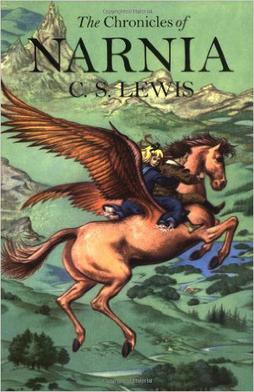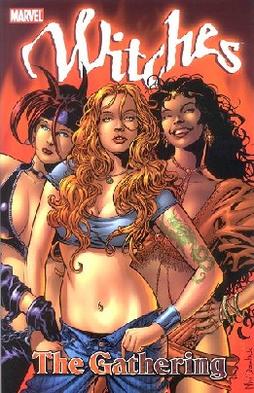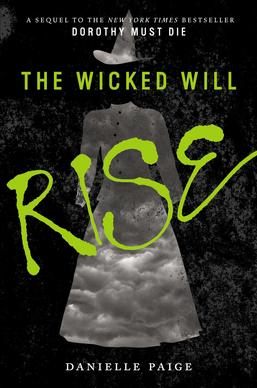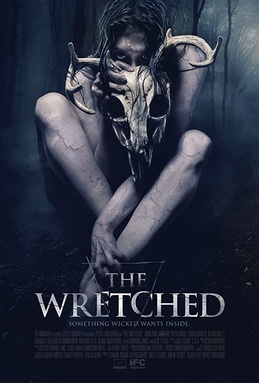See also
- Ladyhawke , a 1985 film with a similar plotline
The Day Boy and Night Girl, also referred to as The Romance of Photogen and Nycteris, is an 1882 fairy tale novel by George MacDonald. A version of this story appeared in Harper's Young People as a series beginning on 2 December 1879 and completing on 6 January 1880. [1]
The Day Boy and the Night Girl begins by telling of a witch named Watho who, in her pursuit of complete knowledge, undertook an experiment to mould two people from birth by strictly controlling their environments.
Watho convinced two expectant mothers to visit her castle. Lady Aurora (whose ambassador husband was away on business) was given spacious, sunlit rooms to stay in; she gave birth to a boy. The witch promptly whisked him away, sending his mother back to her home burdened with the lie that her son had died shortly after birth. The other woman (who had recently been widowed and become blind) Watho settled in windowless, tomblike, but comfortable chambers elsewhere in the castle. Vesper died in childbirth, leaving her daughter to the witch's keeping.
Watho did everything in her power to ensure that the boy Photogen grew up strong, able, and fearless. The boy grew up adept in hunting and riding. However, her foremost concern regarding him was that he should never see the night. Watho desired the opposite for the girl Nycteris, who knew no other world than the stony chambers she had been born in and no other light than that provided by the single dim lamp. Watho, however, taught her music, and her attendant read her books which sharpened her imagination.
It came about that Nycteris, in her sixteenth year, found her way out of these chambers into a night lit by a full-moon. Nycteris was filled with wonder at this glorious new light and the rest of nature; she returned to her rooms before daybreak, desiring to see the outdoors again and not wanting to spoil her chance by arousing Watho's suspicions. Around the same time, Photogen (who spent his days hunting) one morning spied a big cat of some sort slinking off to the forest and took it in his mind to hunt this skilled hunter. As the sun went down, Photogen left to hunt the nocturnal beast, violating the witch's constraint. Once darkness fell, Photogen was beset with terror. He came across Nycteris in one of her outings, and gathered some measure of comfort from the strange girl's calm. She agreed to watch over him while he slept, and so it was that she was for the first time yet outdoors when the sun rose. Photogen regained his courage immediately; assuring Nycteris that there was now nothing to fear, he went on his way, despite her terrified pleas that he stay and protect her from the blinding light.
Photogen, wishing to prove his courage and driven by guilt on how he left Nycteris, stayed up for other nights, only to experience similar results. This caused him ti become ill, which made Watho angry. To punish him, he was locked in his room and all sunlight was blocked. Watho also punished Nycteris by leaving her outside while she slept, thinking the daylight will terrify her to death.
When Nycteris woke up, she slowly managed to deal with the brightness of the day, and understood that it meant no harm. She fell asleep again as night came, until she was found by Photogen who escaped his chambers and still afraid of the night, but mustered the courage to go out. They both decided to escape Watho's cruelty, but had a debate on whether to do it now or wait for the sun. Nycteris convinced a weakening Photogen to not waste time, make peace with the night as she did with the day, and run away immediately, guiding him in avoiding any dangerous or scary animals thanks to her strong sense of smell and hearing. When the day came, Photogen regained his strength and carried Nycteris as they continued their escape.
Photogen and Nycteris saw a red werewolf chasing after them. Photogen hid Nycteris into safety and used his bow and arrows to kill the werewolf, who they realize was a transformed, wrathful Watho all along. Grateful for ending her terror, Watho's servants helped Photogen and Nycteris head to the king and queen to tell their tale. Photogens' parents, who were close confidantes of the king and queen, recognized him as their son and wholeheartedly accepted Nycteris.
Photogen and Nycteris married, and the king granted them Watho's land and estate; they continued to rely on and rejoice in each other's strengths, to the point that Photogen came to prefer the night and Nycteris the day.
Elsewhere in his writings, MacDonald used the more orthodox symbols of light representing goodness and darkness standing for ignorance and evil. In The Day Boy and the Night Girl such a distinction is not clearly set forward, although night and day are vividly polarised. MacDonald may seem to be leaning towards Manichaeism by allowing as much credit to the night as he does in The Day Boy and the Night Girl, but he avoids this by linking evil not with darkness, but rather with self-love. In this way, evil is not portrayed as a force striving against good (which suggests a power equal but opposite to good) but is seen rather as a gaze misdirected inwards towards the self. Photogen and Nycteris are both less than whole beings until they learn to care for each other in spite of their differences and opposing weaknesses. [2]
The three main characters each seek progress, but through different channels. Watho attempts to gather and subjugate, Photogen tries to conquer through ability, and Nycteris uses her imagination to further her understanding and knowledge of the world to better see how she fits in it. The Day Boy and the Night Girl is essentially a tale which depicts MacDonald's belief in the imagination's ability to take the focus off of self, thereby opening the imaginer to a world of companionships which can lead to true wholeness. [3]

The Chronicles of Narnia is a series of seven portal fantasy novels by British author C. S. Lewis. Illustrated by Pauline Baynes and originally published between 1950 and 1956, the series is set in the fictional realm of Narnia, a fantasy world of magic, mythical beasts, and talking animals. It narrates the adventures of various children who play central roles in the unfolding history of the Narnian world. Except in The Horse and His Boy, the protagonists are all children from the real world who are magically transported to Narnia, where they are sometimes called upon by the lion Aslan to protect Narnia from evil. The books span the entire history of Narnia, from its creation in The Magician's Nephew to its eventual destruction in The Last Battle.

In mythology, folklore and speculative fiction, shapeshifting is the ability to physically transform oneself through unnatural means. The idea of shapeshifting is found in the oldest forms of totemism and shamanism, as well as the oldest existent literature and epic poems such as the Epic of Gilgamesh and the Iliad. The concept remains a common literary device in modern fantasy, children's literature and popular culture. Examples of shapeshifters are vampires and werewolves.

Pauline Diana Baynes was an English illustrator, author, and commercial artist. She contributed drawings and paintings to more than 200 books, mostly in the children's genre. She was the first illustrator of some of J. R. R. Tolkien's minor works, including Farmer Giles of Ham, Smith of Wootton Major, and The Adventures of Tom Bombadil. She became well-known for her cover illustrations for The Hobbit and The Lord of the Rings, and for her poster map with inset illustrations, A Map of Middle-earth. She illustrated all seven volumes of C. S. Lewis's Chronicles of Narnia, from the first book, The Lion, the Witch and the Wardrobe. Gaining a reputation as the "Narnia artist", she illustratred spinoffs like Brian Sibley's The Land of Narnia. In addition to work for other authors, including illustrating Roger Lancelyn Green's The Tales of Troy and Iona and Peter Opie's books of nursery rhymes, Baynes created some 600 illustrations for Grant Uden's A Dictionary of Chivalry, for which she won the Kate Greenaway Medal. Late in her life she began to write and illustrate her own books, with animal or Biblical themes.

In fairy tales, a fairy godmother is a fairy with magical powers who acts as a mentor or parent to someone, in the role that an actual godparent was expected to play in many societies. In Perrault's "Cinderella", he concludes the tale with the moral that no personal advantages will suffice without proper connections.

Phantastes: A Faerie Romance for Men and Women is a fantasy novel by Scottish writer George MacDonald published in London in 1858.

Big Wolf on Campus is a Canadian television series created by Peter A. Knight and Christopher Briggs that ran from 1999 to 2002. The central plot revolves around a teenage boy named Thomas "Tommy" P. Dawkins, who was bitten by a werewolf during a camping trip in the woods a week before his senior year of high school. After the bite transforms him into a werewolf, he fights against vampires, werecats, ghosts, zombies, and other supernatural entities to keep his hometown of Pleasantville safe - even though almost everyone in Pleasantville believes that their protector, dubbed the "Pleasantville Werewolf", is dangerous.

Witches is a supernatural comic book limited series that was published by Marvel Comics in 2004. Plotted by Bronwyn Carlton, with scripts by Brian Walsh, it featured art by Mike Deodato and Will Conrad.

"The Black Bull of Norroway" is a fairy tale from Scotland. A version titled "The Black Bull of Norroway" in the 1870 edition of Popular Rhymes of Scotland was reprinted in an Anglicised version by Joseph Jacobs in his 1894 book More English Fairy Tales.
The Brown Bear of Norway is an Irish fairy tale collected by Patrick Kennedy which appeared in his Legendary Fictions of the Irish Celts (1866). It was later included by Andrew Lang in his anthology The Lilac Fairy Book (1910), though Lang misattributed his source as West Highland Tales.

Topaz is a character appearing in American comic books published by Marvel Comics. Created by writer Marv Wolfman and artist Mike Ploog, the character first appeared in Werewolf By Night #13 (1974). Topaz is a witch who belongs to a coven composed of Jennifer Kale and Satana Hellstrom.
Esben and the Witch is a Danish fairy tale first collected by Jens Kamp. Andrew Lang included it in The Pink Fairy Book. A version of the tale also appears in A Book of Witches and A Choice of Magic, by Ruth Manning-Sanders. It is Aarne-Thompson type 327B. In it, a boy named Esben outwits an evil witch to get the magical treasures for the sake of his brothers.

White-Bear-King-Valemon is a Norwegian fairy-tale. The tale was published as No. 90 in Asbjørnsen and Moe's Norske Folke-Eventyr. Ny Samling (1871). George Webbe Dasent translated it for his Tales from the Fjeld.

Dare to Be Scared: Thirteen Stories to Chill and Thrill is a 2003 children's horror short story collection by Robert D. San Souci and illustrated by David Ouimet, consisting of thirteen stories. It is the first book in the Dare to be Scared series, which consists of four books.

The Wicked Will Rise is a young adult novel by Danielle Paige, and the sequel to the 2014 book Dorothy Must Die. It was published by HarperCollins on March 30, 2015. It continues the story of high school girl Amy Gumm in her mission to assassinate Dorothy Gale, who has become twisted and evil.

The Wretched is a 2019 American supernatural horror film written and directed by the Pierce Brothers. It stars John-Paul Howard, Piper Curda, Zarah Mahler, Kevin Bigley, Gabriela Quezada Bloomgarden, Richard Ellis, Blane Crockarell, Jamison Jones, and Azie Tesfai. The film follows a defiant teenage boy who faces off with an evil witch posing as the neighbor next door.
Prince Wolf is a Danish fairy tale collected by Svend Grundtvig in his book Danske Folkeaeventyr. It is related to the international cycle of the Animal as Bridegroom or The Search for the Lost Husband. Tales with similar motifs and elements are found across Denmark and Scandinavia.
Sigurd, the King's Son is an Icelandic fairy tale collected and published by author Jón Árnason. It is related to the international cycle of the Animal as Bridegroom or The Search for the Lost Husband, wherein a human princess marries a prince under an animal curse, loses him and has to search for him.
The Man and the Girl at the Underground Mansion is a Danish folktale collected by theologue Nikolaj Christensen in the 19th century, but published in the 20th century by Danish folklorist Laurits Bodker.